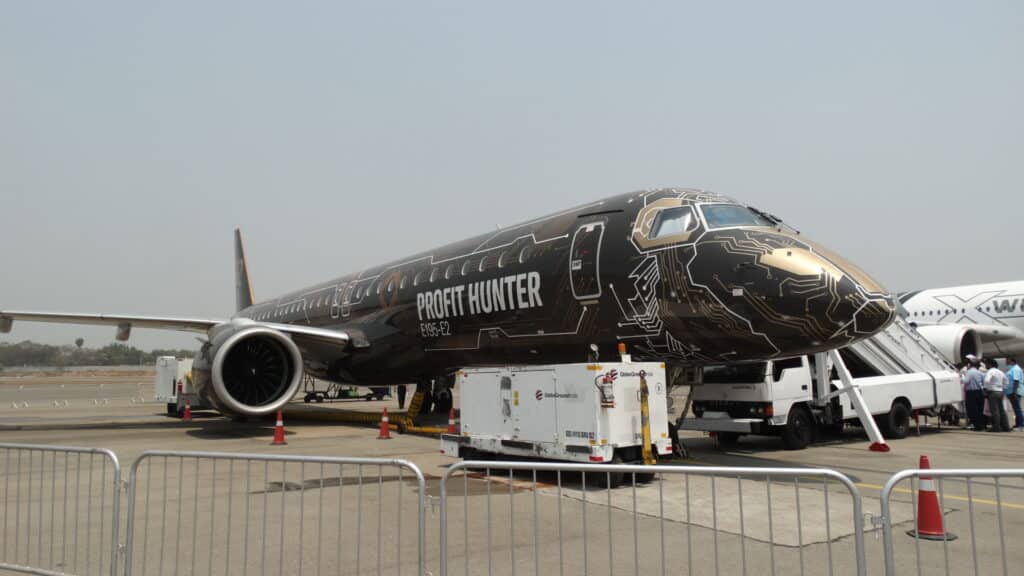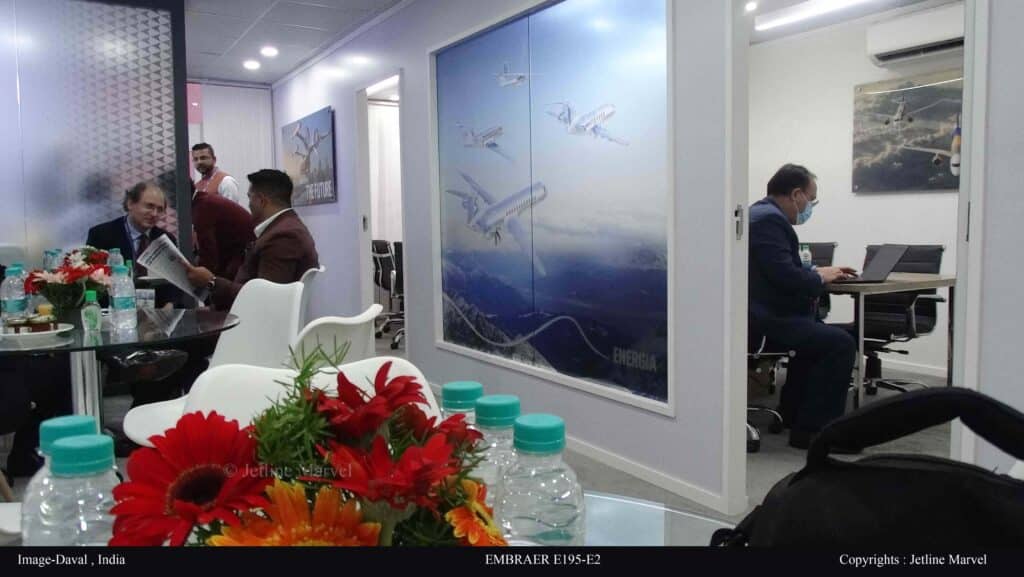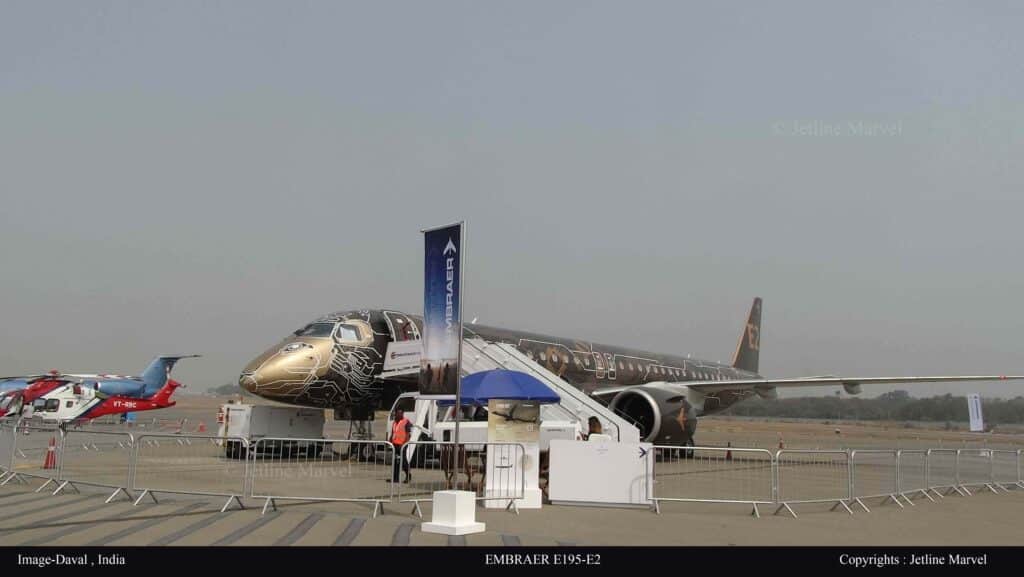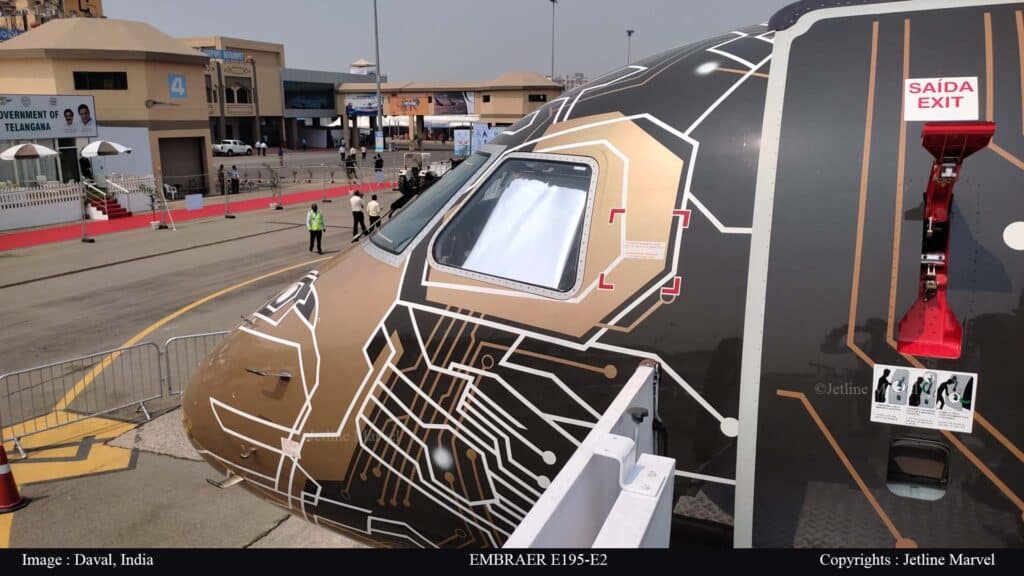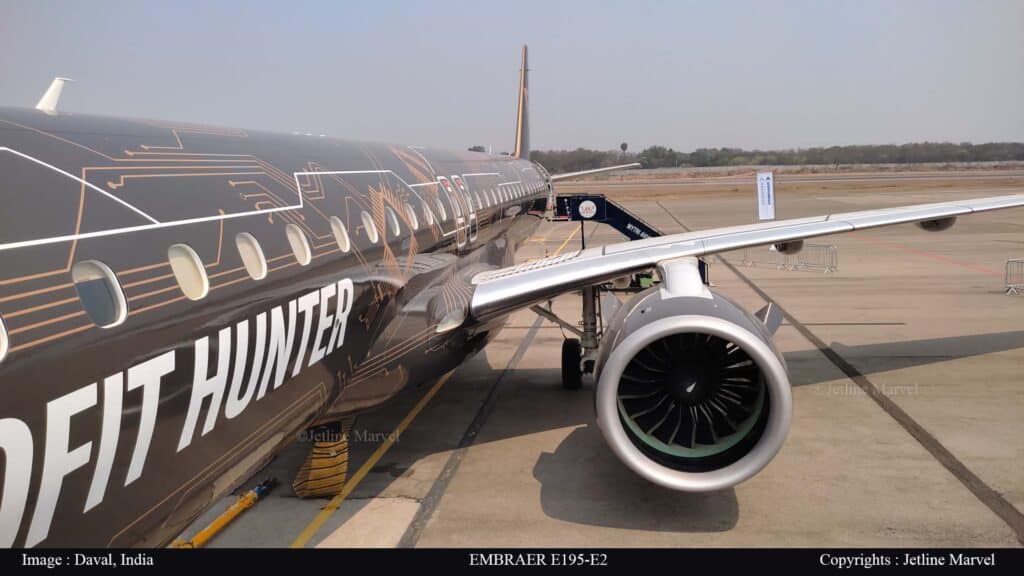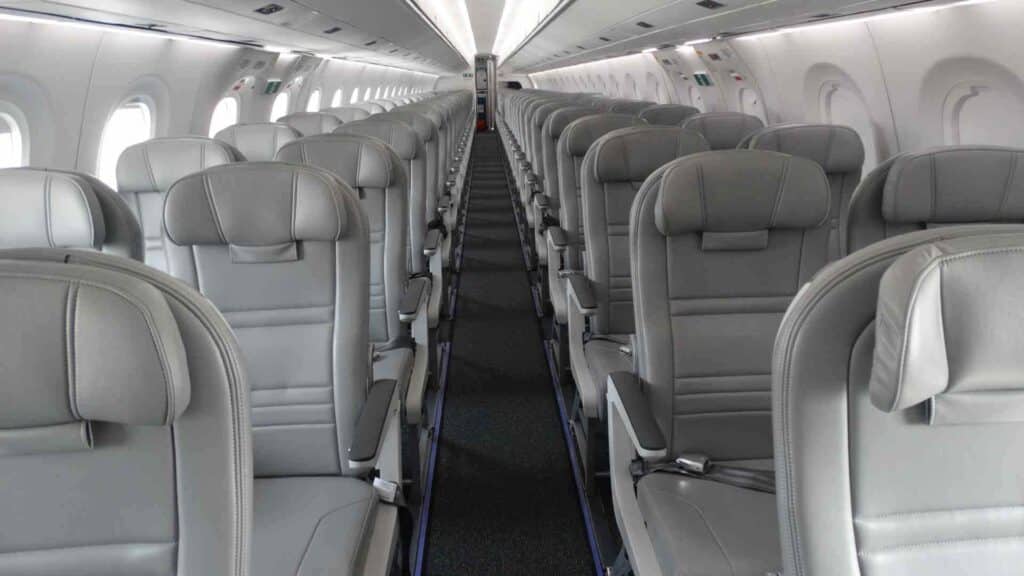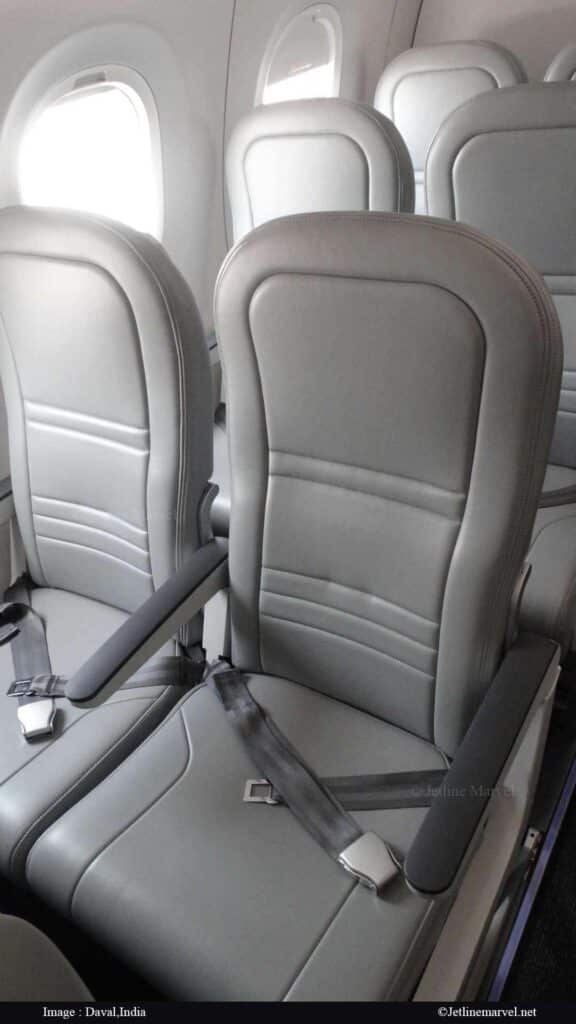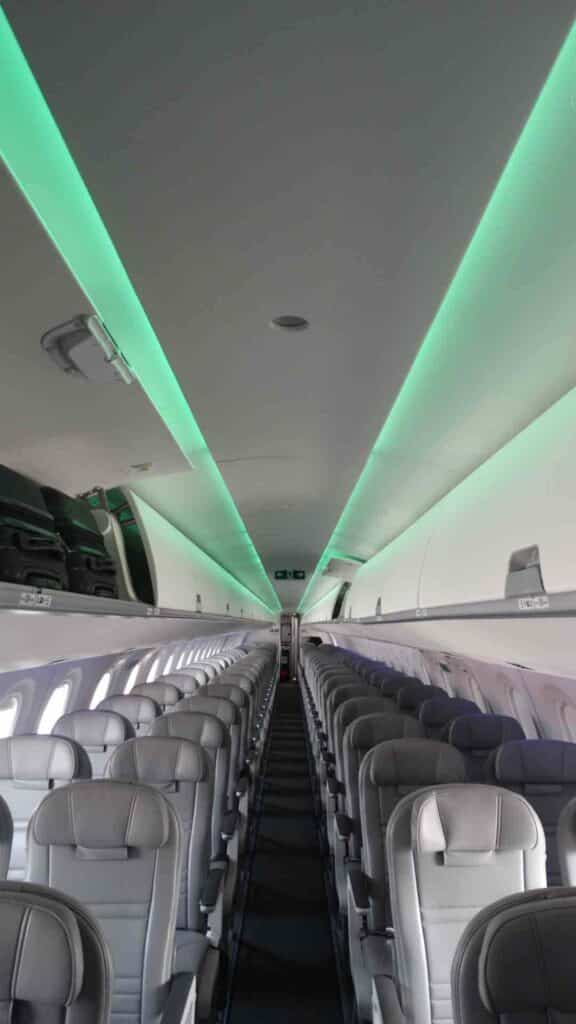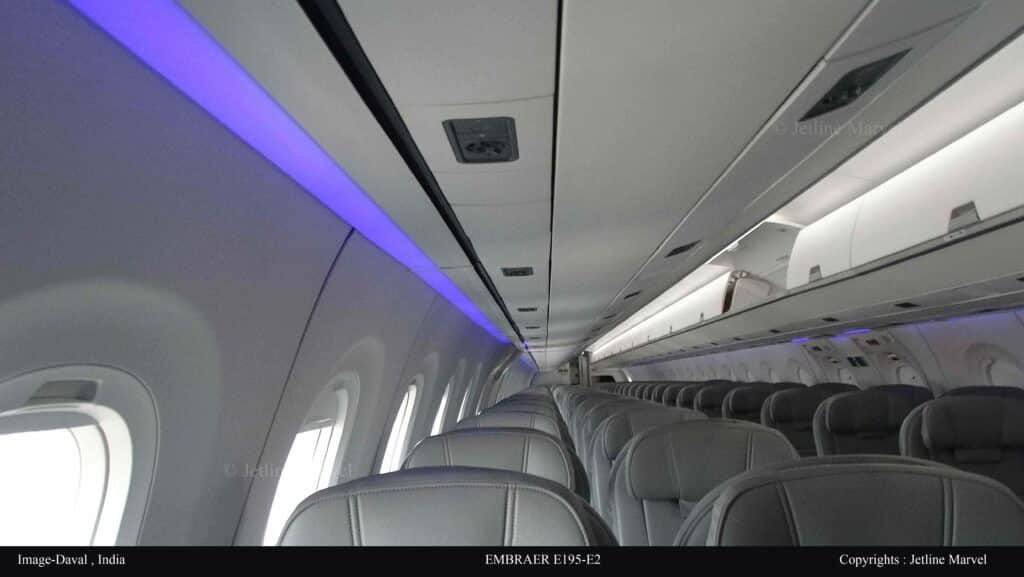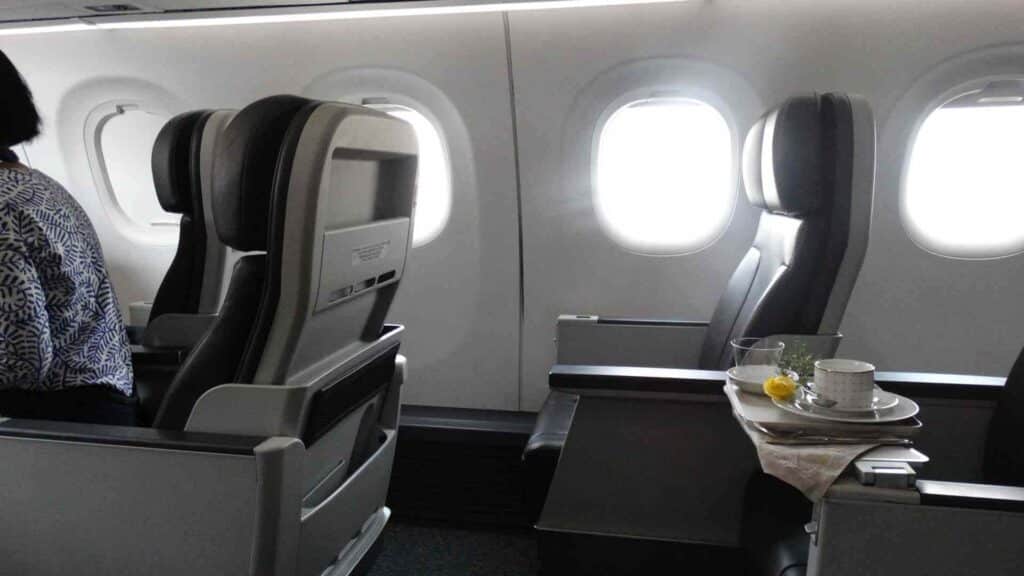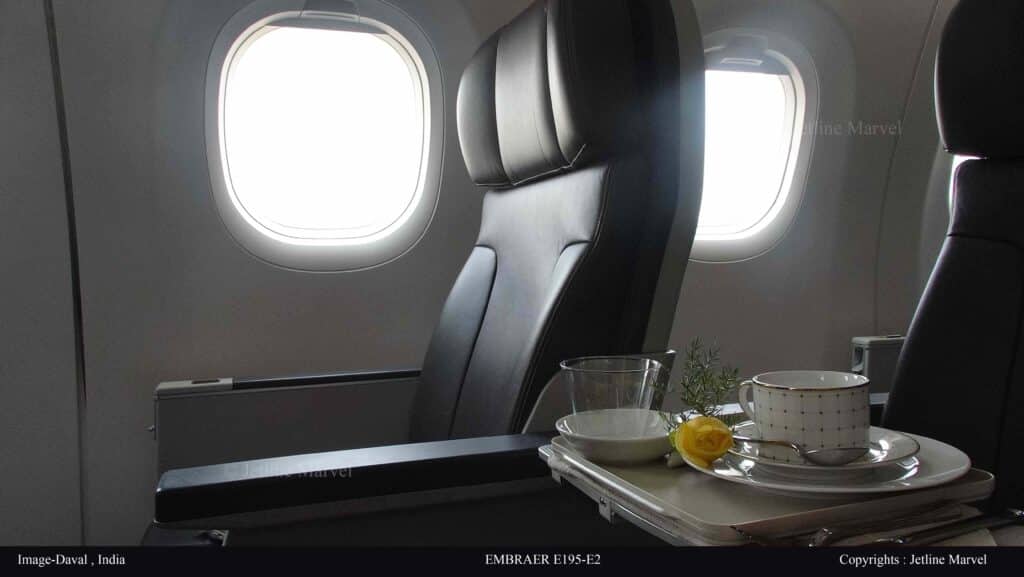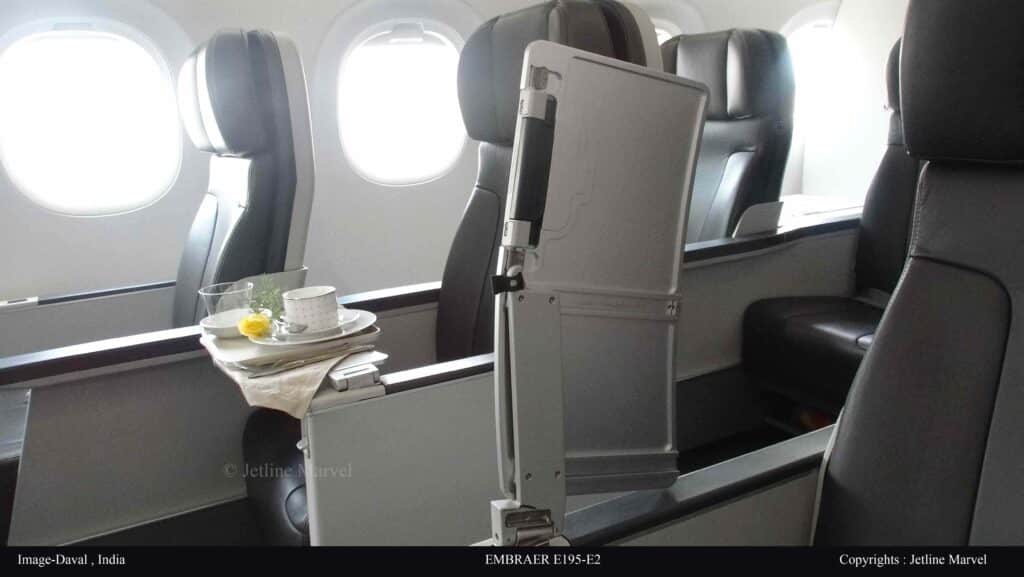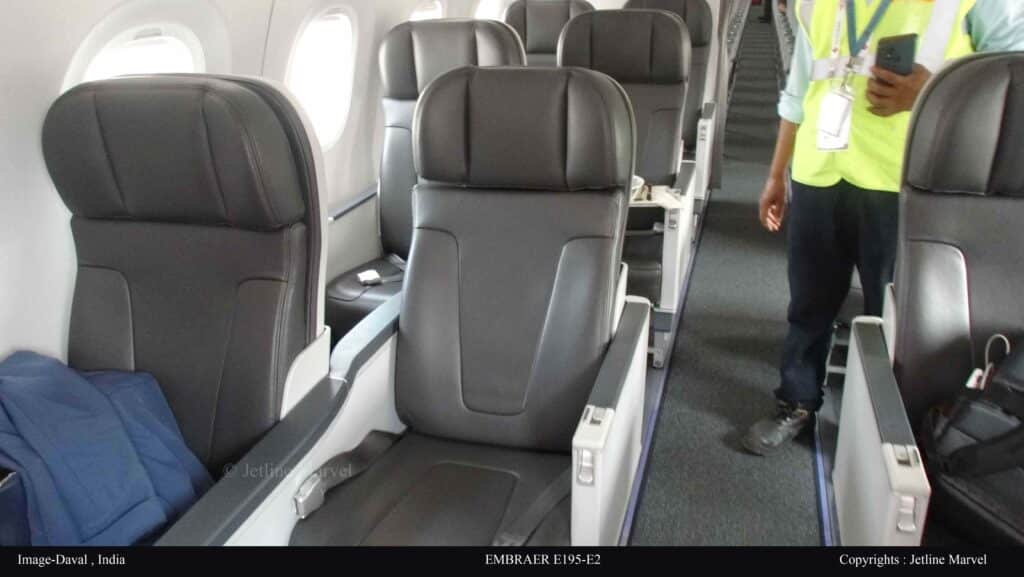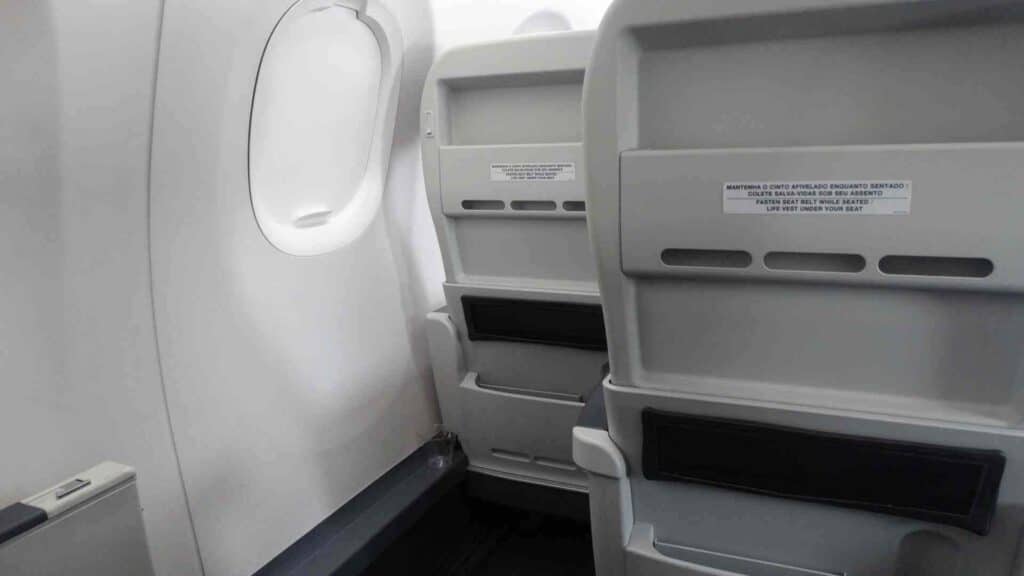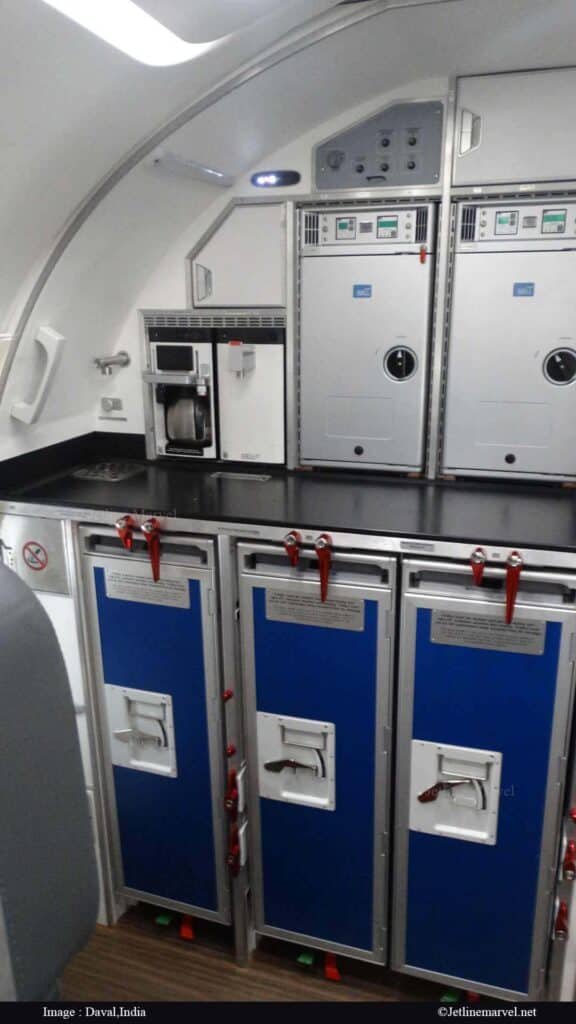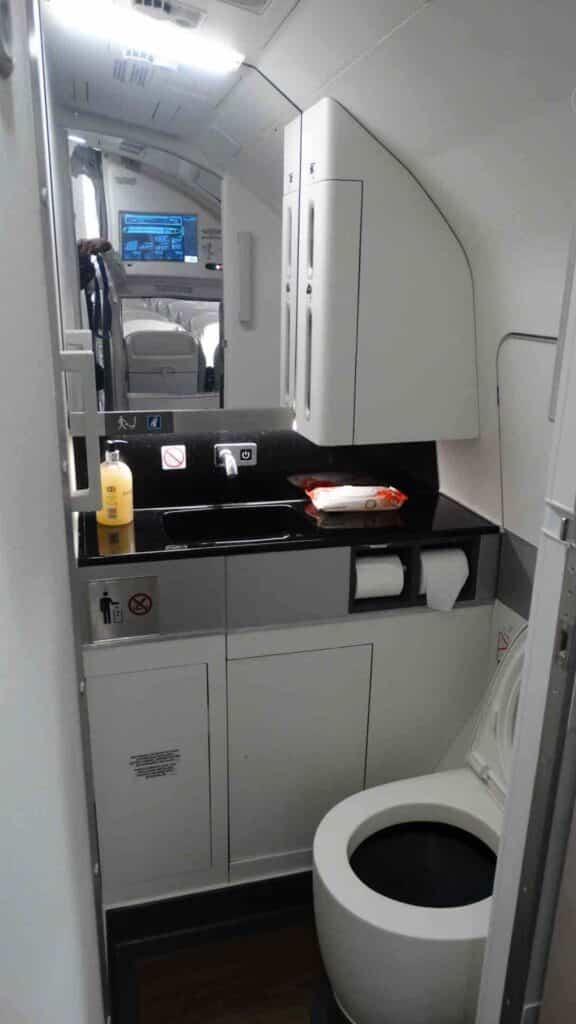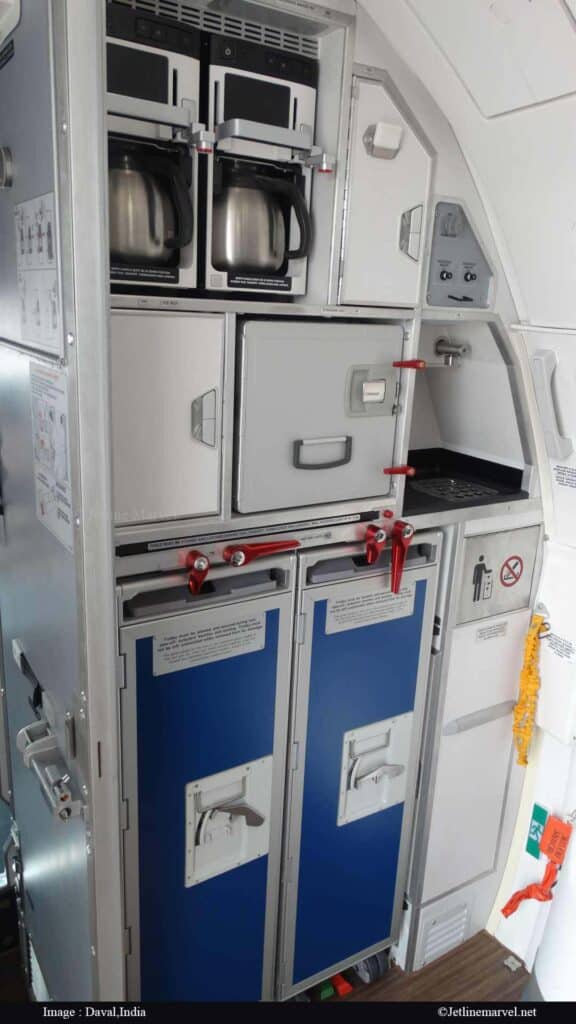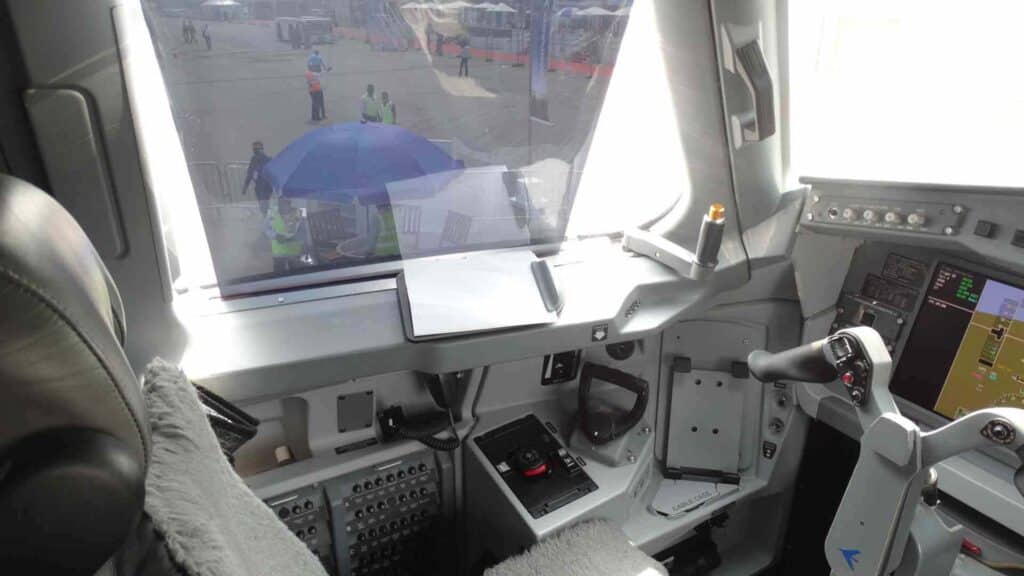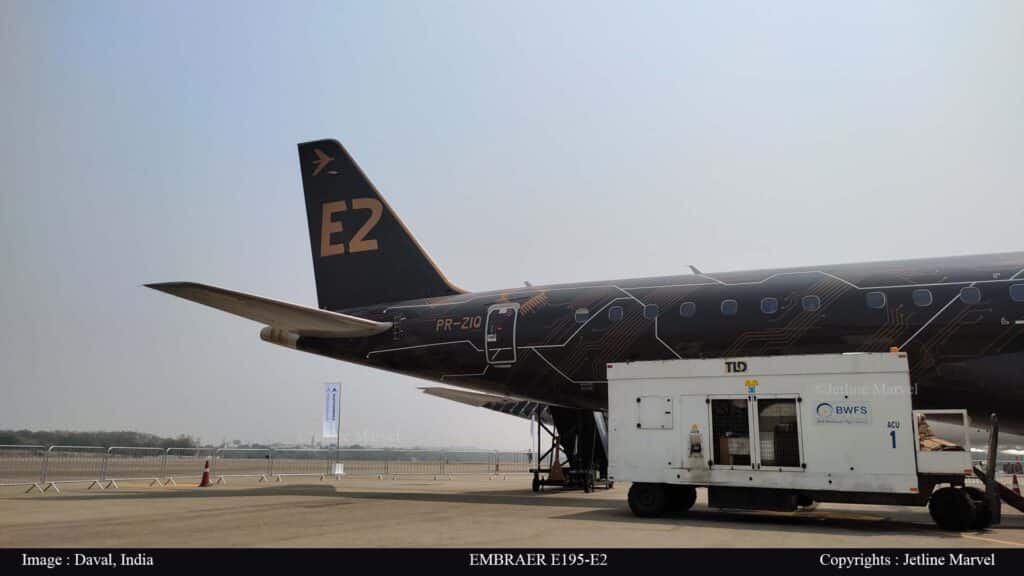Aviation
JM Exclusive tour onboard the EMBRAER E195-E2 Demonstrator.

At Wings India 2022, we had the opportunity to see a static exhibition of aircraft on tour. In this post, I’ll talk about the Embraer E195-E2’s cabin tour and why it’s one of the greatest planes in its class and the most appropriate aircraft for the Indian market.
I came to Embraer Chalet in the morning and met Nilma Missir-Boissac, Embraer’s APAC communication head. The hospitality of the Embraer team was outstanding, and their responses were humble and courteous. I also received a few interesting documents that helped me learn more about the plane. Nilma cited the fact that most aircraft, such as the A320 and B737, have a capacity of 180 seats or more yet only fill 130 – 140 seats, implying that the aircraft can only fill 70% of its capacity.
She goes on to say The Embraer is precisely matching the need for 90-140 seat capacity in the Indian market while also saving airlines a significant amount of money in terms of operations and fuel. The plane features plenty of legroom and accommodation, as well as a large luggage compartment that allows you to bring larger things on board. She went on to say that the E195-E2 aircraft has the most modern technical features and has been updated from previous generations, resulting in overall efficiency increases and a 17.3 percent reduction in fuel usage.
- New engines contributed 11% of the total.
- New Wings and Aerodynamic Cleaning received a 4.8% rating.
- Fly-By-Wire 1.8% from 4th Generations
Boeing Begins Build on New Zealand’s First P-8A Aircraft
Even before COVID, 50 percent of domestic flights in India had between 90 and 150 passengers every trip, according to Embraer’s analysis. The combination of optimal capacity and low unit cost of the E195-E2 makes it an appealing platform for connecting metro to non-metro and non-metro to non-metro cities in India.
[the_ad_placement id=”article-ad”]
The Embraer E-Jet E2 family of medium-range jet airliners is the successor to Embraer’s initial E-Jet. The first version, the E190-E2, flew for the first time on May 23, 2016, was certified on February 28, 2018, and went into service with Widere on April 24, 2018.
The three twinjet variants use the same four-abreast narrow-body fuselage with varying lengths and three new wings, Pratt & Whitney PW1919G turbofans in two sizes, updated avionics, and fly-by-wire controls.
As is usual in the aerospace industry, most of the best-selling aircraft are rebuilt with new features and technology to make them far more useful to consumers on the market while also improving fuel economy. The A320 neo and B737 max are segmented for several sorts of variants based on the seats and range, similar to how Airbus and Boeing reintroduced its A320 and B737 respectively with the A320 neo and B737 max. Similarly, Embraer resurrected its much-anticipated E195 aircraft from 2004 as the E195-E2 with new features and technologies to remain competitive in the market.
[the_ad_group id=”4059″]
One positive aspect of the E-series planes. Embraer built aircraft wings to match the size of the fuselage, lowering the weight and drag ratio, which is critical for aircraft. The wing span of the Airbus A320 series and the Boeing B737, for example, is the same. However, the wings of the Embraer E175,190, and E195-E2 have different sizes. This aids in the improvement of each aircraft’s performance.
As of March 31, 2021, 1,596 Embraer E195 aircraft have been sold. The E2, on the other hand, is taking its time to gain confidence in the fresh market. This aircraft is well suited to regional destinations with minimal traffic, such as China and India. E2 has received 205 orders from 12 clients throughout the world as of today. Azul of Brazil and Aircap of Ireland have placed the largest orders for E2 planes.
Air Costa Airlines was the first client for the E195-E2 in India, which was run by the Aircap firm, who provided three leased aircraft. However, they stopped in 2017, citing financial issues as the reason.
At Wings India 2022 in Hyderabad, Embraer showed its E195-E2 demonstration plane. Let’s take a look at how this aircraft obtained its cutting-edge avionics and interior design.
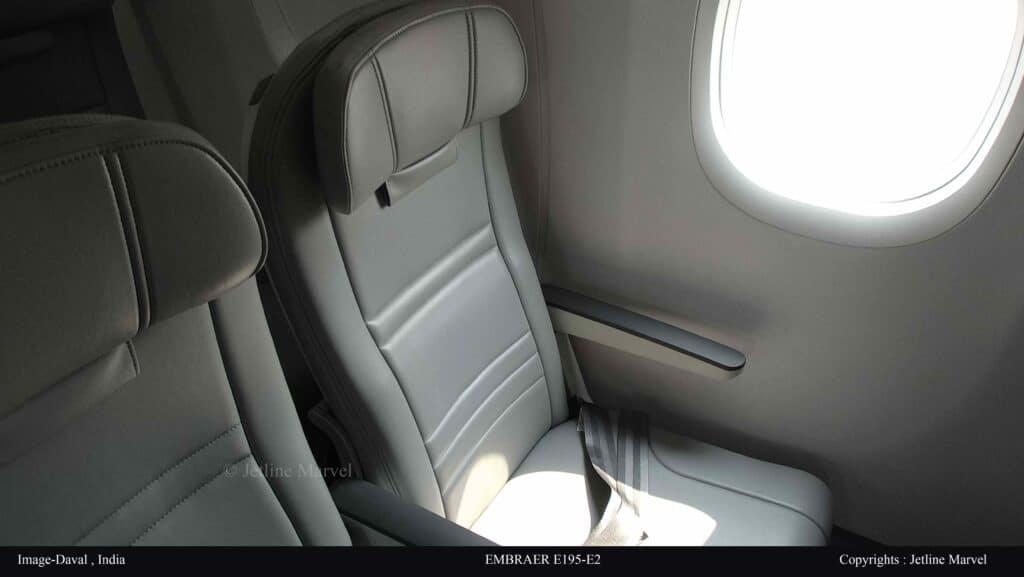
The middle portion features the Premium economy and adequate spacing, as well as a static seat configuration with a somewhat wider window.
At Wings India 2022 in Hyderabad, Embraer showed its E195-E2 demonstration plane. Let’s take a look at how this aircraft obtained its cutting-edge avionics and interior design.
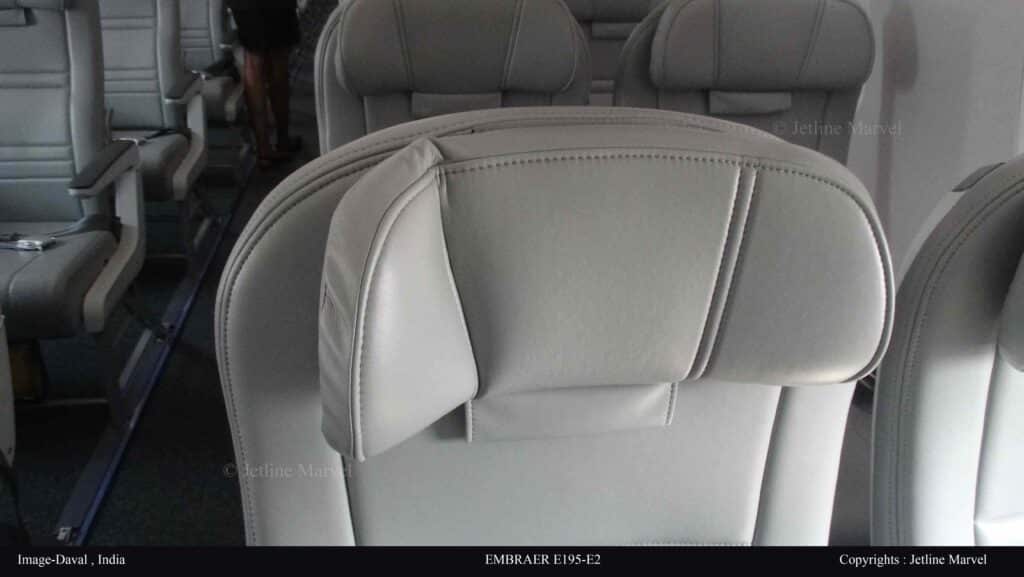
Passengers in Premium Economy may sleep without their heads resting on the shoulders of others thanks to the unique Headrest option.
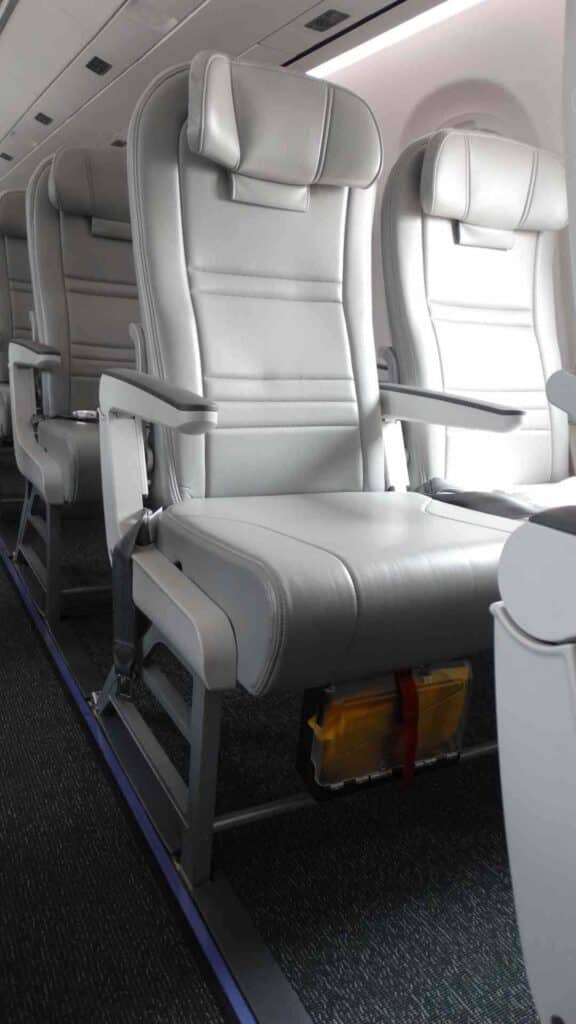
With a simple but practical design, emergency survival packs are located directly below the seats and provide enough room to store additional small bags or keep your legs cooler.
Embraer Develops Cargo Transportation Solutions for Commercial Aircraft
Brazil’s Embraer says KC-390 goes off runway in test
Embraer displays cutting-edge E195-E2 at wings India
The Embraer aircraft perform the taxiing operation on its own ?
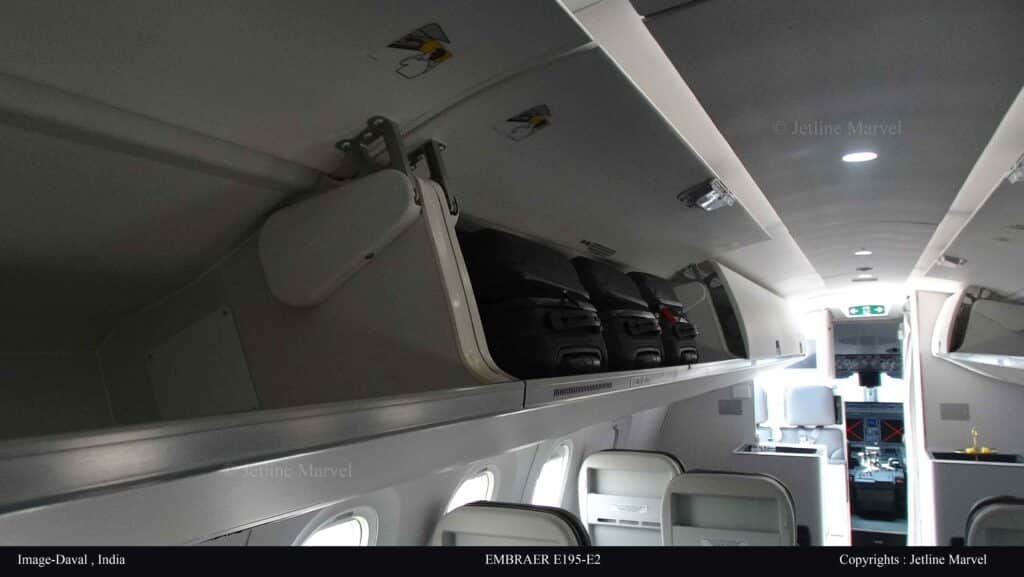
One advantage of luggage bins is that they are broader and easier to get the bags when they are rolled down to boxes.
According to Embraer, the number of improvements made in the aircraft from previous generations has boosted efficiency, which has resulted in a 25% reduced fuel burn per seat when compared to A220-300 aircraft.
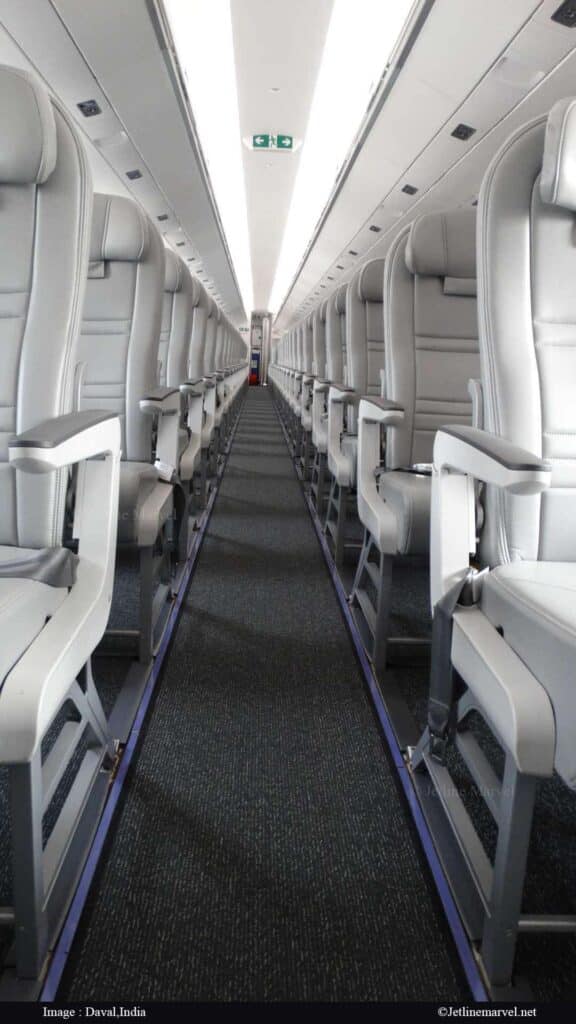
The seats are designed in such a way that housekeeping and air circulation around the cabin may be readily maintained.
Embraer and American Airlines Sign Contract for 15 E175s
The lighting on the aeroplane varies with each phase of flight, creating mood lighting. It’s designed to work in tandem with a traveler’s circadian cycles, assisting with sleep when resting and waking up when landing.
[the_ad_group id=”4060″]
The E195-E2 is the biggest of the E2 series, with a single-class economy layout seating up to 146 people. The lack of centre seats in the 2-2 arrangement of the cabin may be the first issue that many passengers notice. Aisle or window seats are available in each row.
Embraer highlighted the various options, which range from 29 inches at the smallest to 34 inches at the largest. Slim line seats might come with standard conveniences like normal-size tray tables and literature pockets. Seats with a higher pitch level may provide more conveniences. A seat with 34 inches of legroom offers adequate area for a headrest.
Airlines can also add a full-size business class cabin, similar to those seen on bigger planes. Embraer designed and manufactures a unique business class seat exclusively for the E190-E2 aircraft line.
[the_ad_placement id=”article-ad”]
A 2-2 arrangement with a seat pitch of at least 51 inches is possible with staggered seats. On the E170/190 series of aircraft, the standard business class layout is a 1-2 arrangement to allow for bigger seats.
Passengers in the window seat should be able to stroll in front of the aisle seat without disturbing their fellow passengers, making it simpler to reach the aisle. On an E-Jet in a 2-2 business class layout, it’s not quite direct aisle access, but it’s the next best thing.
Embraer is presently fine-tuning the product, which is the first of its sort on an E-Jet. The E2 series aircraft have wider windows than the preceding generation, providing more natural light and greater views for passengers.
Navigation charts and maps may be presented on the displays without the requirement of an external device, providing pilots with the most up-to-date situational awareness.
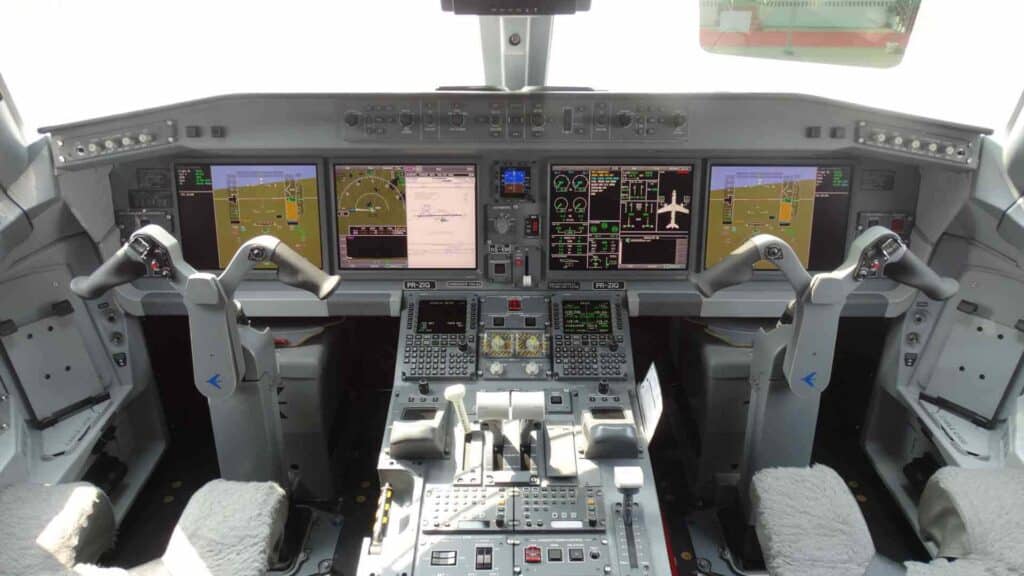
The cockpit is equipped with the most up-to-date avionics and a fourth-generation fly-by-wire technology.

Flight crew Capt Berto , Embraer ” This aircraft is wonderful and simple to operate and maintain, having been in service for almost 20 years. This aircraft would be ideal for the Indian aviation sector. “
Embraer pilots of the current generation will also observe that the control column is the same in an upside-down W-shape. Airlines may save money on pilot training by using a cockpit that is substantially equivalent to the E170/E190 series of aircraft. Only slight modifications in training are necessary because the type ratings are same.
[the_ad id=”11602″]
In India, most airlines employ ATR aircraft for small-area connectivity since the engines used in ATR aircraft are noisy, whereas Embraer uses Pratt & Whitney engines, which are quieter than ATR engines. Currently, the E145 ERJ is operated by Star Air in South India.
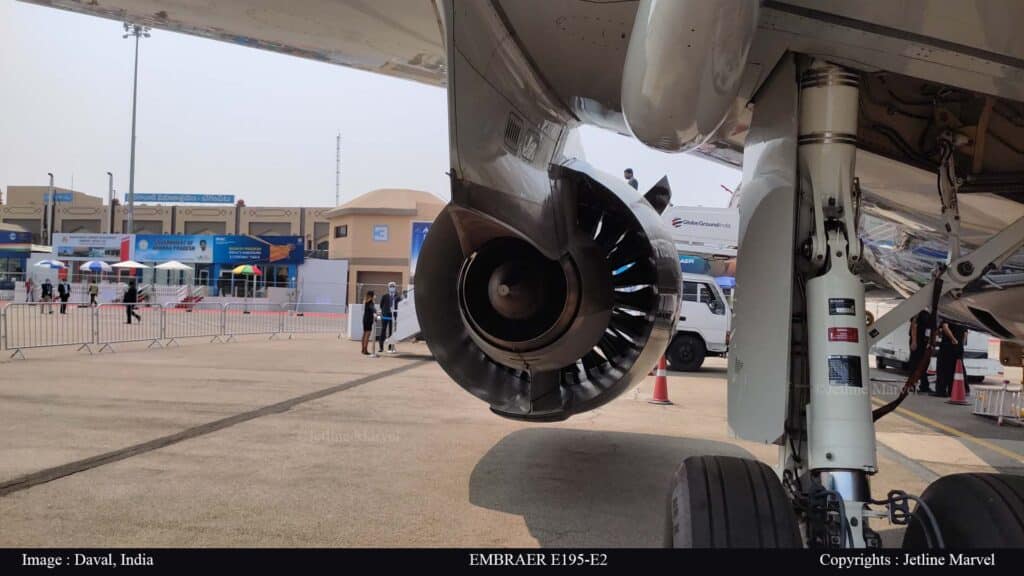
The aircraft has a basic landing gear design for ease maintenance, and the PW Geared Turbofan engine can be seen.
Under fuselage retractions, the landing gears would be identical to those on other aircraft, increasing the aerodynamic efficiency during the cruise. E195-E2 has a simpler mechanism that saves the operator money on maintenance.
The 2× Pratt & Whitney PW1919G Engine is used to power the E195. The E195-E2’s high by pass ratio engine allows it to reach a peak speed of Mach.082 while minimizing fuel consumption.
[the_ad id=”11603″]
Based on the orders it is receiving, the E195-E2 has shown to be the aircraft that will salvage the E2 programme. However, it still has a long way to go to catch up to its rivals.
The improved flying stability, resulting in higher lift and weight savings, as well as drag reductions due to the 26 percent reduction in horizontal tail (tailplane) size, account for the fuel savings of the now closed loop fly-by-wire control. Smaller control surfaces reduce drag and the aircraft’s total weight.
[the_ad_placement id=”content”]
The Airbus A220 has a range of around 3,400 nautical miles, which is 800 nautical miles more than the Embraer E195-E2. The smaller Embraer E190-E2 has a slightly higher range of 2,850 nautical miles in a single-class configuration.
All airlines need and want to make more money, and the Embraer is the best in terms of earning more money. As a result, the branding trademark was created using Profit Hunter, which actually helps airlines gain a greater margin of profits from operations.
The Embraer E195 would be most suited for Indigo, Go-first , Spice Jet airlines and Star air, who already provide regional connectivity. This aircraft is being considered for operation by international airlines because to its cost-cutting qualities, and the Indian market is currently examining it for regional connectivity.

Aviation
Boeing, Antonov to Collaborate on Defense Projects

– MOU represents Boeing’s commitment to work with Ukrainian industry
– Includes exploring opportunities for collaborating on in-country support of Unmanned Aerial Systems
A Memorandum of Understanding was signed today by Boeing and Antonov Company to investigate potential collaboration on defense-related projects.
“We’re happy to keep collaborating with the Antonov Company to help Ukraine’s economic development and expansion,” stated Ted Colbert, CEO and president of Boeing Defence, Space, & Security.
Airbus and the Antonov An-225: The Best Partnership:Click here
“This agreement demonstrates our ongoing efforts to find more opportunities to work with Ukrainian industry, which was underscored by our signing of the Ukrainian Defence Industry Compact earlier this year.”
The areas of potential collaboration identified in the agreement consist of training, logistical support and overhaul services for tactical Unmanned Aerial Systems utilized by the Ukrainian Armed Forces, which includes the ScanEagle. In addition, the companies will also explore opportunities for Antonov to provide engineering support to Boeing.
The six largest cargo aircraft ever built in the aviation industry:Click here
“A strong, innovative, and efficient defense industry is key to sustainable economic development and national security, and we are extremely excited to collaborate with Boeing,” said Ievhen Gavrylov, CEO of Antonov Company.
This agreement brings a whole new level of opportunity to implement the latest and most effective solutions – in addition to the possibility of future projects with Boeing in the aerospace and defense industry.”
-

 Travel1 week ago
Travel1 week agoAir India to Expand US Operations with Three New Routes After a Decade
-

 Travel2 weeks ago
Travel2 weeks agoWhy We Should Avoid These Stamps in a Passport
-

 Airlines1 month ago
Airlines1 month agoInvestigations Reveal Fake Chinese Titanium in Boeing and Airbus Jets
-

 Tech4 weeks ago
Tech4 weeks agoChina’s CATL Plans 1,800-Mile Electric Plane Launch by 2027
-

 Airport3 days ago
Airport3 days agoTop 10 Largest Airports in the World by Size
-

 Aerospace4 weeks ago
Aerospace4 weeks agoChina’s Fighter Jets Turn Wings into Autonomous Drones
-

 Airlines4 days ago
Airlines4 days agoAir India Rolls Out A350s for Delhi-New York JFK and Newark Routes
-

 Defence3 weeks ago
Defence3 weeks agoBoeing Enhances Chinook with New Engines and Block II Upgrades at $96 Million

